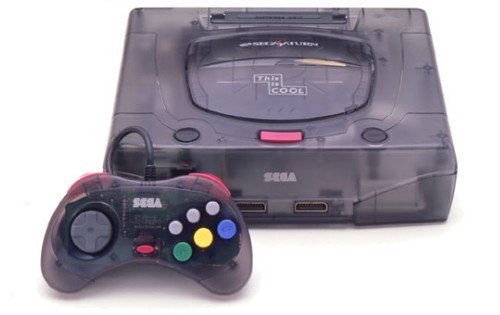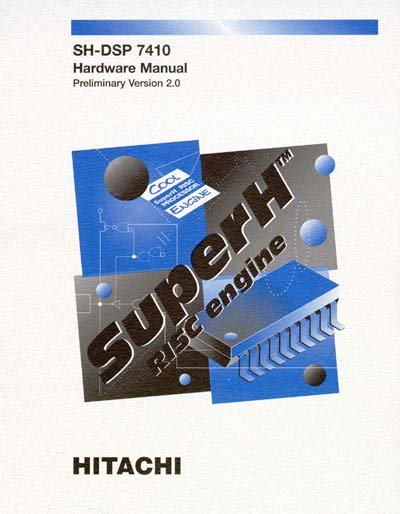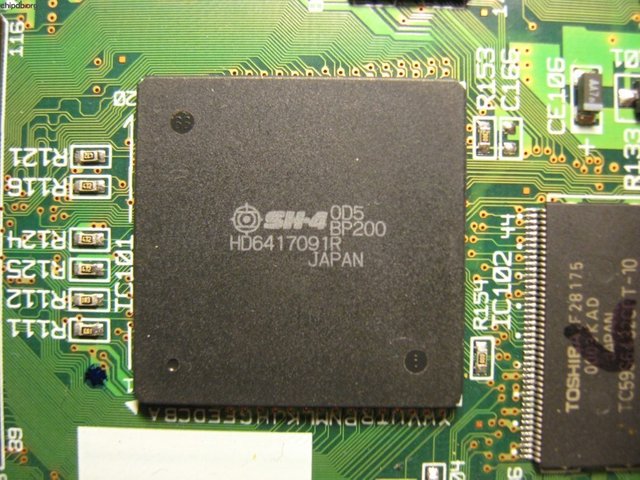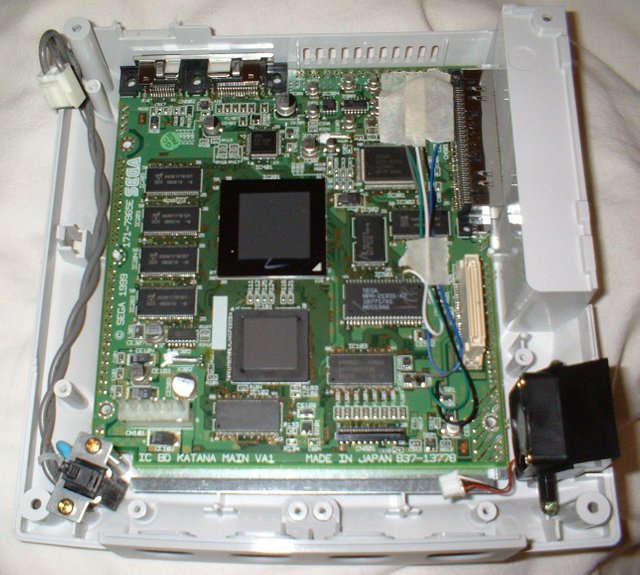Hitachi SuperH : A piece of hardware used on Sega systems / consoles

Unveiled publicly for the first time in 1994 during the commercialization of the 32x, add-on for the Megadrive whose role is to multiply its capacities and allow the management of 3D mapped, the SuperH processor range will obtain the favors of Sega in terms of material composition on the vast majority of their hardware console and arcade.

Despite being a direct descendant of the family of H8 processors, the SuperH, designed by the manufacturer Hitachi, has a RISC-like architecture that shares similarities with the Motorolla 68000 CPUs from the point of view instruction set and programming. The Sh-2 contained in the 32x and the Saturn (two processors in each) is the equivalent of a 68020. The SH-4 (Dreamcast), for its part, would correspond to the 68060 because of its superscalar architecture Multiple instructions simultaneously, each in a different pipeline). Quite similar, functionally, this range of CPU still has two peculiarities of size towards its competitor: a low cost of production and a reduced energy consumption. Much money and performance, the blue hedgehog firm was not asked to switch to the Hitachi side while maintaining their own 68K programming habits.
As we have seen, several versions of this processor are emerging and will be embedded in many systems:
The 32-bit SH-2 clocked up to 28.7Mhz, used on the 32x, Saturn and Sega STV system.
The 32-bit SH-3 clocked up to 200Mhz, incorporating a memory management unit, used on the Cave 3rd Gen system (Cave CV1000 / 133 Mhz).
The SH-4 32bits, clocked up to 360Mhz, featuring a 128bits arithmetic coprocessor, used on the Dreamcast, Naomi, Naomi 2 of Sega, but also on the Atomiswave. It is interesting to note that the Dreamcast is by no means a 128bits machine, although it uses a part code realized as well. One more commercial maneuver!
In terms of raw power and as an example, the Hitachi SH-4 processor is about four to five times more efficient than a 266Mhz Pentium II in floating-point computing. Yes, you read correctly, at the output of this machine, the computing and rendering power exceeded any desktop PC produced during this period.
The SH-5 project was developed jointly by STMicroelectronics (code name ST50) and Hitachi (SH5). The SH-5 is known to Linux for its nickname SH64, being the only 64-bit incarnation of the SuperH architecture.
But ... yes because there is a "but", following strategic disagreements and a loss of interest of STMicroelectronics, SH-6 and SH-7 projects are currently dormant, with no chip maker, Nor even Hitachi, can realize these processors for licensing issues, despite the public announcements made in 2000.
It is thus that this range of CPU disappeared in the collective unconscious of the manufacturers, but also of the public. As technology evolved, many processes changed the situation and influenced the choice of different big names in amusement gaming to adopt more conventional architectures and close to a microcomputer. All for a question of cost and ease of programming.

